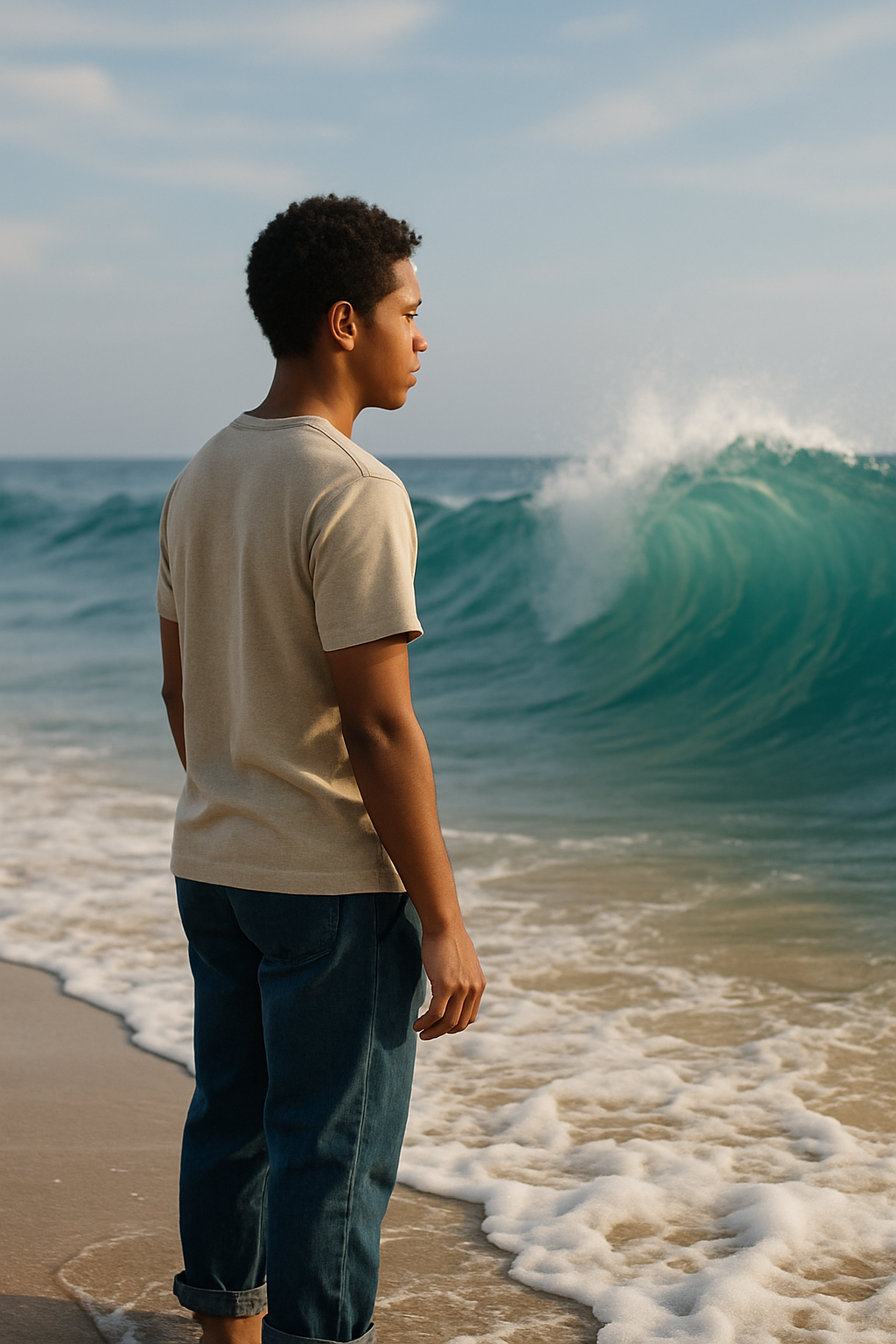How to Use Detached Observation & Ride the Wave to Cope with Intense Emotions
We all have moments when emotions hit like a wave—unexpected, powerful, and all-consuming. Whether it's anxiety before a big conversation, grief that resurfaces out of nowhere, or shame that creeps in after a mistake, the urge to do something about our emotions is strong. But sometimes, the most helpful thing is to not fight the wave or get swept up in it—but to notice it, and ride it.
Two techniques I often teach in therapy to help people sit with big feelings are Detached Observation and Riding the Wave. These tools can be used separately or together, depending on what you need in the moment.
What Is Detached Observation?
Detached observation is a mindfulness-based skill rooted in CBT and DBT. It means stepping back from your thoughts and feelings and watching them with gentle curiosity instead of judgment or urgency.
You shift from “I am anxious” to “I notice that anxiety is here.”
This small change creates distance between you and the emotion. It reminds you that you have feelings, but you are not defined by them. You become the observer of your internal experience—not the one being ruled by it.
How to Use Detached Observation on Its Own
Name the emotion as if you're observing it outside of you.
“Sadness is visiting.”
“There’s a swirl of overwhelm right now.”Notice the physical sensations without judgment.
“My stomach is tight. My hands are clenched.”
Watch the thoughts pass by like clouds or a scrolling feed.
“That’s a worry thought… now there’s a self-critical one.”
Offer yourself curiosity instead of criticism.
“Interesting that this is coming up right now. I wonder what it's trying to tell me.”
Detached observation is helpful when you feel stuck in your head or tangled up in a strong reaction. It brings clarity and calm.
What Does It Mean to Ride the Wave?
Riding the wave comes from Dialectical Behavior Therapy (DBT) and is all about emotional endurance. You let the emotion rise, peak, and pass—just like a wave in the ocean. You don’t fight it, and you don’t try to make it go away. You stay present with it until it naturally recedes.
You say: “I can stay with this feeling. I don’t need to act on it or run from it.”
How to Use Ride the Wave on Its Own
Acknowledge the feeling is here.
“This is anger. It’s strong right now.”
Don’t resist or distract. Just breathe and stay.
“I don’t have to like this, but I can let it be here.”
Visualize the emotion like a wave.
“It’s building… now it’s cresting… okay, now it’s starting to pass.”
Let your breath anchor you through the wave.
Inhale slowly. Exhale slowly. Remind yourself: “This is temporary.”
Ride the wave is especially helpful when you feel flooded—like your emotions might take over. It teaches your body that intense feelings can come and go without you needing to panic or fix anything.
How to Use Both Together
Using detached observation and ride the wave together gives you a two-part system:
Detached Observation gives you mental distance and clarity.
Ride the Wave helps you physically and emotionally endure the intensity.
Here’s how they work in tandem:
Notice what’s happening (Detached Observation).
Instead of saying “I’m freaking out,” pause and say:
“I notice anxiety has shown up. My chest feels tight, and my thoughts are racing.”
Observe your internal experience and label it without judgment.
Choose to allow it to be here (Ride the Wave).
Breathe slowly. Feel your feet on the floor. Remind yourself:
“This is just a wave. It will pass.”
Don’t try to fix it. Don’t rush it away.
Let the emotion rise and fall.
As it intensifies, breathe through it. When your mind tells you “I can’t handle this,” counter it with:
“I am handling this. One breath at a time.”
Reflect afterward.
Once the wave has passed, reflect on what helped you ride it out. This builds confidence and resilience for next time.
Using both tools together allows you to stay aware and stay present. You’re not checking out or dissociating—you’re tuning in, while also regulating.
Why This Matters
Practicing detached observation and riding the wave won’t make emotions disappear—but they will make them more manageable. Over time, you’ll build tolerance for discomfort, and that’s a core skill for mental health.
You’ll begin to trust that feelings, no matter how intense, are temporary.
You’ll stop being afraid of your own emotional world.
You’ll learn: I can feel this and be okay.
Final Thought
If this sounds simple but hard in practice—you’re not alone. These are skills that take time and repetition, like learning to surf. Some waves will knock you down. That’s okay. Get back up, breathe, and try again. You don’t have to control the ocean—just learn to ride it.
If you want to…
Build tolerance for discomfort
Reduce reactivity
Increase emotional confidence
Feel less afraid of your own feelings
